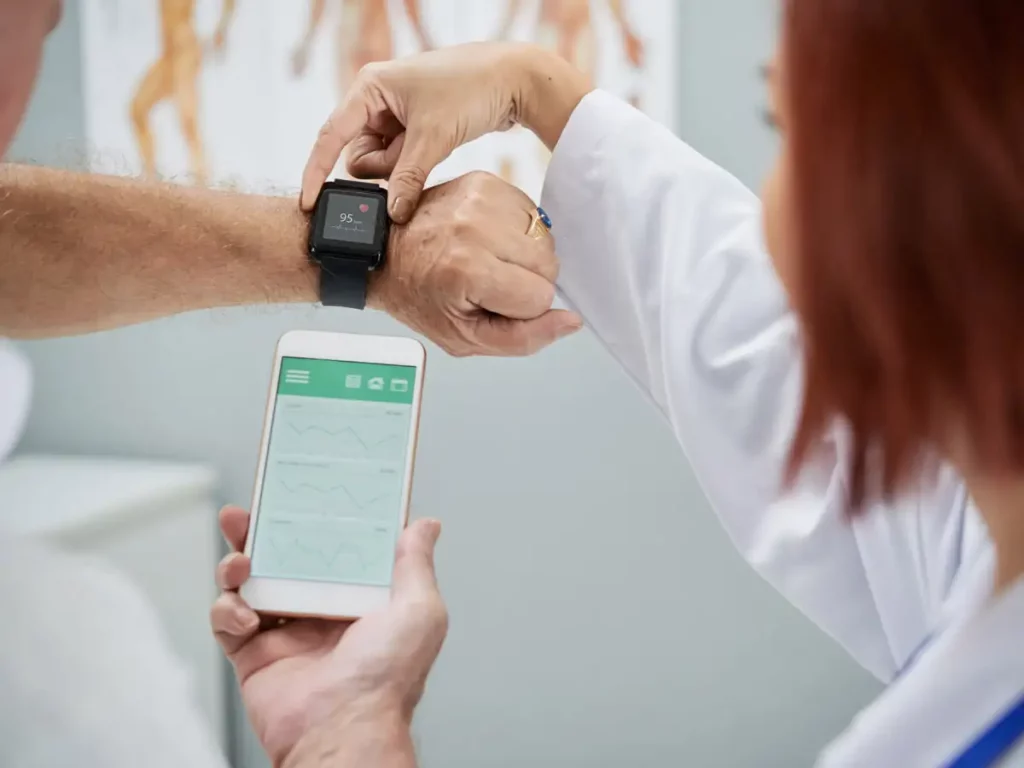In the age of artificial intelligence, where algorithms can drive cars, compose music, and diagnose diseases, a new frontier is quietly emerging: the ability to sense, track, and even influence our emotional well-being. Emotional health—once considered elusive, deeply personal, and largely intangible—is now becoming quantifiable. Thanks to rapid advances in wearable technology, emotion-sensing AI, and behavioral analytics, the invisible fluctuations of mood and stress can now be monitored in real time. But as technology gets closer to our inner emotional landscapes, new questions arise. Can AI truly improve our emotional health—or are we trading privacy for convenience in ways we don’t yet fully understand?
The Rise of Emotion-Sensing Technology
Until recently, emotional health was measured through subjective means: interviews, self-report questionnaires, and observation. But the human mind is a complex and often unreliable narrator. People may misreport how they feel, suppress emotions, or be unaware of the subtle signs of stress or burnout. AI-driven tools and wearable technologies now offer a new layer of objectivity by tracking physiological signals linked to emotional states.
Modern emotion-tracking wearables like the Apple Watch, Fitbit, Whoop, and Empatica go beyond basic heart rate monitoring. They analyze heart rate variability (HRV), skin conductance, sleep cycles, and breathing patterns to infer stress levels and mood shifts. Some wearables even use electrodermal activity (EDA) sensors and thermal imaging to assess changes in sweat gland activity or facial temperature—both proxies for sympathetic nervous system arousal, which correlates with emotional intensity.
AI-powered software applications, such as Affectiva, Mindstrong, or Moodbeam, extend these capabilities by using cameras, voice analysis, and even keystroke patterns to detect micro-expressions, speech tone, and typing rhythm. These nuanced behaviors can indicate mood swings, anxiety, or depression—sometimes before the user is even aware of them.
From Tracking to Intervention: AI as a Wellness Coach
AI systems are not just observers; they’re becoming active participants in emotional regulation. Some apps now act as digital mental health coaches. For instance, Woebot, an AI-powered chatbot, uses principles from cognitive-behavioral therapy (CBT) to help users reframe negative thoughts and build emotional resilience through daily conversations. Similarly, AI systems integrated into wearable platforms like Fitbit or Oura offer real-time nudges—such as breathing prompts or guided meditations—when signs of stress are detected.
These AI-based interventions personalize recommendations based on continuous biometric feedback. If your HRV drops or your sleep data shows signs of restlessness, the system might encourage mindfulness practices or suggest rescheduling intense tasks. Over time, machine learning algorithms refine their recommendations by learning from your behavior, creating increasingly individualized mental health support plans.
AI is also being used in therapeutic settings. Clinicians can use emotion-sensing data to monitor clients between sessions, identifying moments of emotional crisis or non-compliance with treatment. In psychiatric care, AI has shown promise in detecting early signs of relapse in disorders like bipolar disorder or schizophrenia by analyzing patterns in speech, text, or physiological data. This continuous stream of insight allows for early intervention—potentially preventing hospitalizations or mental health emergencies.
Ethical Implications: Surveillance or Support?
While the promise of AI-driven emotional health is exciting, it also opens a Pandora’s box of ethical concerns. Emotional data is arguably more sensitive than physical data—it reveals not just what you do, but how you feel. Who has access to this data, and how is it being used?
Data privacy is a major concern. Most emotion-sensing devices collect continuous, real-time information. While companies claim this data is anonymized, there have been repeated incidents where supposedly “safe” datasets were re-identified or sold to third parties. The idea that your mood patterns could be analyzed by advertisers, insurers, or employers raises red flags. For example, if your wearable suggests frequent emotional volatility, could a health insurer use this to raise your premiums? Could employers use AI-driven emotion detection in workplace surveillance or hiring decisions?
Consent is another grey area. Many users agree to data collection through lengthy, unreadable privacy policies. But meaningful consent requires understanding what is being collected, why, and what the consequences are. As emotion-tracking becomes embedded in everyday devices—phones, cars, VR headsets—it becomes increasingly difficult to opt out.
There’s also the risk of over-reliance on algorithmic feedback. Emotional health is inherently human and influenced by cultural, social, and contextual factors. While AI can offer insights, it may miss the nuanced reasons behind an emotional state—like grief, love, or moral distress. Delegating emotional interpretation to machines may lead to reduced self-awareness or emotional dependence on external validation.

Cultural and Societal Ramifications of Emotional AI
The growing role of AI in emotional health reflects broader societal shifts in how we define and manage mental well-being. In Western cultures, there’s increasing pressure to be emotionally optimized—calm, productive, happy. Emotion-tracking devices feed into this narrative, subtly implying that any deviation from positivity is a problem to be solved. But emotional richness includes sadness, anger, and confusion, which are natural responses to life’s challenges.
Furthermore, emotional AI systems are often trained on culturally specific data sets. An AI trained primarily on Western expressions of emotion may misread or pathologize emotional patterns in non-Western users. This introduces the risk of cultural bias in emotional interpretation, leading to misdiagnoses or inappropriate interventions.
There is also the potential for emotional manipulation. If companies can track your emotions in real time, they can tailor content, advertisements, or even news to exploit your emotional state. Algorithms could be optimized not for well-being, but for engagement or consumption, reinforcing addictive patterns or emotional volatility. This isn’t theoretical—it already happens in social media platforms that algorithmically serve content based on your emotional responses.
The Potential for Equity and Access in Mental Healthcare
Despite the concerns, emotional AI could be a game-changer in democratizing mental health support. Globally, millions of people lack access to mental health professionals due to cost, stigma, or geographical barriers. AI-powered tools offer scalable, 24/7 support that transcends traditional healthcare models. A student in a rural village with no access to therapy can use a mood-tracking app; an elderly person living alone can talk to a mental health chatbot for emotional companionship.
AI also enables earlier detection. Most people seek mental health help only after a crisis, but emotion-sensing technologies can detect subtle warning signs and provide preemptive support. For populations at high risk—such as caregivers, trauma survivors, or frontline workers—AI tools can offer consistent monitoring and a sense of safety.
To realize this potential equitably, developers must prioritize accessibility, affordability, and cultural inclusivity in design. Emotion-sensing wearables should not be luxury gadgets for the wealthy. Open-source algorithms, non-profit partnerships, and community-driven development can help bridge the digital divide in emotional health care.
The Future of AI-Emotion Integration: Where Are We Headed?
The future of AI in emotional health is both promising and paradoxical. We may soon see wearable devices that detect not just emotional state but emotional trajectory—forecasting how you’ll likely feel later in the day based on your biometrics, behavior, and social interactions. AI companions could become emotional mirrors, helping people track patterns in relationships, decision-making, and self-esteem.
Advanced generative models might simulate therapeutic conversations that feel deeply human. Emotion-aware environments—like smart homes or offices—could adjust lighting, temperature, or soundscapes based on your emotional state. While some of this sounds utopian, the risk of misuse or emotional commodification must not be underestimated.
Ultimately, emotional health is a deeply human journey. AI can offer tools, insights, and even comfort—but it cannot replace the complexities of human connection, empathy, or introspection. The challenge lies in using technology not to escape or control our emotions, but to engage with them more consciously.
Conclusion: Can AI Help Us Feel Better—or Just Better Tracked?
AI has the potential to revolutionize how we understand and care for our emotional health. With smart sensors, predictive algorithms, and adaptive interfaces, we can gain new insights into patterns that were once invisible. We can catch early signs of distress, receive personalized interventions, and support underserved communities. But these benefits come with significant ethical and existential questions. Who owns our emotions? What happens when emotional intelligence becomes digital currency?
The path forward requires more than technological innovation—it demands ethical vigilance, cultural humility, and human-centered design. AI can be an ally in emotional wellness, but only if it serves the complexity and dignity of the people it aims to help. The goal should not be emotional perfection, but emotional presence. If AI can support that goal—by helping us listen more deeply to ourselves—then it may indeed be a breakthrough worth embracing.










































